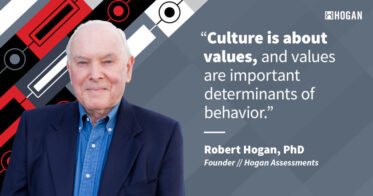The Hogan Bold scale is one of the eleven scales in the Hogan Development Survey (HDS), which measures the dark side of personality. The scale assesses an individual’s tendency to engage in self-promotion, exploit others, take more credit, and refuse responsibility for failure.
High scores on the Bold scale often display a tendency for overpromising – an inclination to express confidence beyond their actual capabilities. This trait, when harnessed positively, can inspire confidence and rally teams around ambitious goals. However, it also carries the risk of unmet expectations, potentially eroding trust.
Another characteristic associated with high Bold scores is a tendency to blame others when faced with failure. Individuals exhibiting this trait may deflect responsibility to external factors, safeguarding their self-image. While this behaviour can preserve confidence, it impedes personal growth by inhibiting accountability and learning from mistakes.
The Bold scale also indicates a reluctance to learn from past experiences, suggesting resistance to adapting strategies based on lessons learned. While unwavering confidence can be an asset, a failure to incorporate feedback may hinder personal and professional development.
In navigating the complexities of the Bold scale, a balanced approach is crucial. Leveraging boldness for inspiration while addressing potential drawbacks, such as overpromising and resistance to learning, fosters effective leadership.
To enhance their leadership effectiveness and improve relationships with others, individuals with high scores on the Bold scale can consider the following coaching strategies:
First – Respect Others’ Judgments and Feedback
It’s crucial to respect others’ judgments and feedback regarding one’s leadership style and behaviour. Instead of dismissing or disregarding negative feedback, individuals should be open to constructive criticism and willing to reflect on their actions. Additionally, acknowledging and appreciating positive feedback can foster a culture of trust and collaboration.
Second – Soften Your Approach and Recognise Fallibility
Individuals who score high on the Bold scale might come across as intimidating or dominant. To mitigate this, it’s important to soften the communication style, recognising that no one is right all the time. Cultivating humility and acknowledging that others can offer valuable insights and perspectives can foster a more inclusive and collaborative environment.
Third – Recognise and Acknowledge Others’ Contributions
To counterbalance a self-focused approach, individuals should actively recognise and appreciate the contributions of others. Sharing credit for accomplishments and acknowledging the efforts and achievements of team members helps build trust, foster collaboration, and create a positive work culture.
Fourth – Take Personal Responsibility, Especially for Mistakes
Individuals scoring high on the Bold scale should take greater personal responsibility, particularly for their mistakes or when goals are not achieved. Embracing accountability demonstrates integrity and a commitment to continuous improvement. By taking ownership of failures, individuals can learn from their experiences and foster a culture of growth and learning within their teams.
Conclusion
Coaching individuals with high scores on the Bold scale involves encouraging them to balance self-confidence and self-promotion with humility, accountability, and genuine recognition of others’ contributions. By fostering a more inclusive and collaborative leadership style, individuals can leverage their strengths while addressing their shortcomings, leading to more effective and harmonious relationships with their teams.
Uncover the nuances of your hidden dark sides or fine-tune your coaching approaches with our expert assistance. We’re committed to guiding you through this process. Reach us here at your convenience, and let’s chart a course towards your professional growth.



